Filter by

New Mexico and the Pimería Alta, The Colonial Period in the American Southwest
Colonialism and the process of state expansion into new territories far from the capitol and mother country have occurred for thousands of years across the globe.
- Edition
- -
- ISBN/ISSN
- 9781607327226
- Collation
- -
- Series Title
- -
- Call Number
- T 979 DOU n c
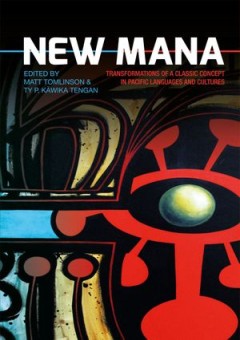
New Mana, Transformations of a Classic Concept in Pacific Languages and Cultures
‘Mana’, a term denoting spiritual power, is found in many Pacific Islands languages. In recent decades, the term has been taken up in New Age movements and online fantasy gaming.
- Edition
- -
- ISBN/ISSN
- 9781760460075
- Collation
- -
- Series Title
- -
- Call Number
- T 306.44 TEN n c

Classical Economics and Modern Theory
In this thought-provoking book, well known economists Kurz and Salvadori cover original findings and new vistas on old problems. They cover: alternative interpretations of classical economists new growth theory the relationship between Sraffian theory and Von Neumann the treatment of capital in neoclassical long-period theory. Incorporating cutting-edge research and new work, this book will be …
- Edition
- -
- ISBN/ISSN
- -
- Collation
- -
- Series Title
- -
- Call Number
- 650
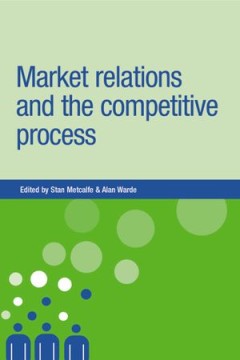
Market Relations and the Competitive Process
There has been increasing interest and debate in recent years on the instituted nature of economic processes in general and the related ideas of the market, in particular the competitive process. This debate lies at the interface between two largely independent disciplines, economics and sociology, and reflects an attempt to bring the two fields of discourse more closely together. This book exp…
- Edition
- -
- ISBN/ISSN
- 9780719064685
- Collation
- -
- Series Title
- -
- Call Number
- 650
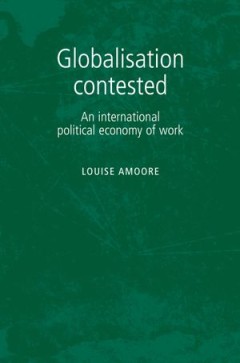
Globalisation contested
This exciting book provides an illuminating account of contemporary globalization that is grounded in actual transformations in the areas of production and the workplace. It reveals the social and political contests that give 'global' its meaning, by examining the contested nature of globalization as it is expressed in the restructuring of work. Rejecting conventional explanations of globalizat…
- Edition
- -
- ISBN/ISSN
- 9781526137418
- Collation
- -
- Series Title
- -
- Call Number
- 650

The End of Irish History? Reflections on the Celtic Tiger
Ireland appears to be in the throes of a remarkable process of social change. Over the last decade, the apparently inescapable status of the twenty-six counties as an economic casualty has been dramatically reversed. In recent years, it has become commonplace for the Irish Republic to register formal rates of economic growth that are the envy of every other western European state. The purpose o…
- Edition
- -
- ISBN/ISSN
- 9780719062308
- Collation
- -
- Series Title
- -
- Call Number
- 650
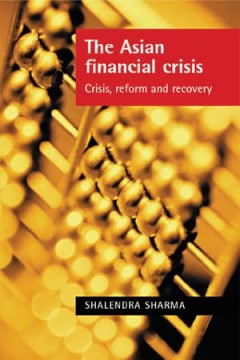
The Asian Financial Crisis : Crisis, reform and recovery
The Asian financial crisis of 1997-98 shook the foundations of the global economy. What began as a localised currency crisis soon engulfed the entire Asian region. What went wrong and how did the Asian economies, long considered 'miracles', respond? How did the United States, Japan and other G-7 countries react to the crisis? What role did the IMF play? Why did China, which suffers from many of…
- Edition
- -
- ISBN/ISSN
- 9781526137685
- Collation
- -
- Series Title
- -
- Call Number
- 650

Social Panorama of Latin America 2001-2002
The year 1997 marked the end of a cycle of growth in Latin America that enabled a number of countries to make significant strides in reducing poverty. The turning point in this process was the Asian crisis, which ushered in a five-year stretch of slower economic growth,higher unemployment and unchanging (or, in many cases, rising) poverty indices in the region. It may be said, without exaggerat…
- Edition
- -
- ISBN/ISSN
- -
- Collation
- -
- Series Title
- -
- Call Number
- 650
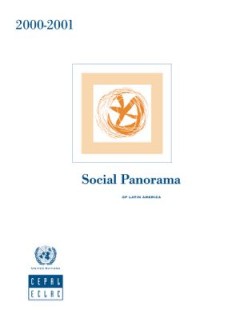
Social Panorama of Latin America 2000-2001
The 2000-2001 edition of the Social Panorama of Latin America provides new poverty estimates for the countries of the region based on household surveys conducted around 1999, together with recent statistics on the distribution of in-come,employment and unemployment. It also examines the levels of public ex-penditure allocated to social sectors, the status of Latin American households and the ma…
- Edition
- -
- ISBN/ISSN
- -
- Collation
- -
- Series Title
- -
- Call Number
- 650
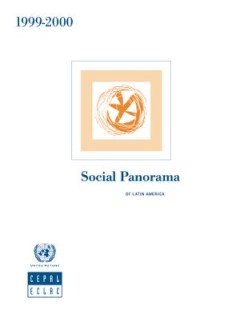
Social Panorama of Latin America 1999-2000
The 1999-2000 edition of the Social Panorama of Latin America examines the growing social vulnerability of the population, the main features of the pattern of occupational stratification associated with newly emerging modes of development, the living conditions of children and adolescents and of older adults, which are two particularly vulnerable groups, and the institutional and social implica…
- Edition
- -
- ISBN/ISSN
- 9789213633816
- Collation
- -
- Series Title
- -
- Call Number
- 650
 Computer Science, Information & General Works
Computer Science, Information & General Works  Philosophy & Psychology
Philosophy & Psychology  Religion
Religion  Social Sciences
Social Sciences  Language
Language  Pure Science
Pure Science  Applied Sciences
Applied Sciences  Art & Recreation
Art & Recreation  Literature
Literature  History & Geography
History & Geography